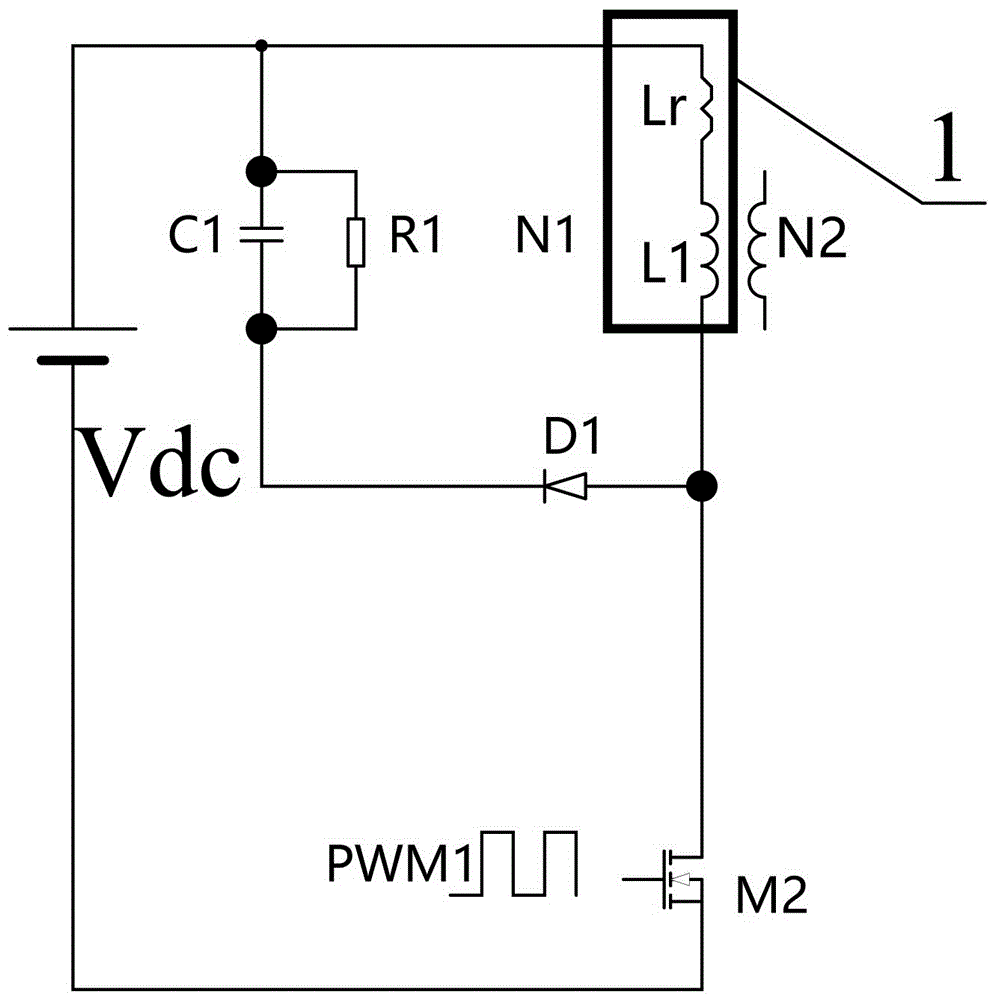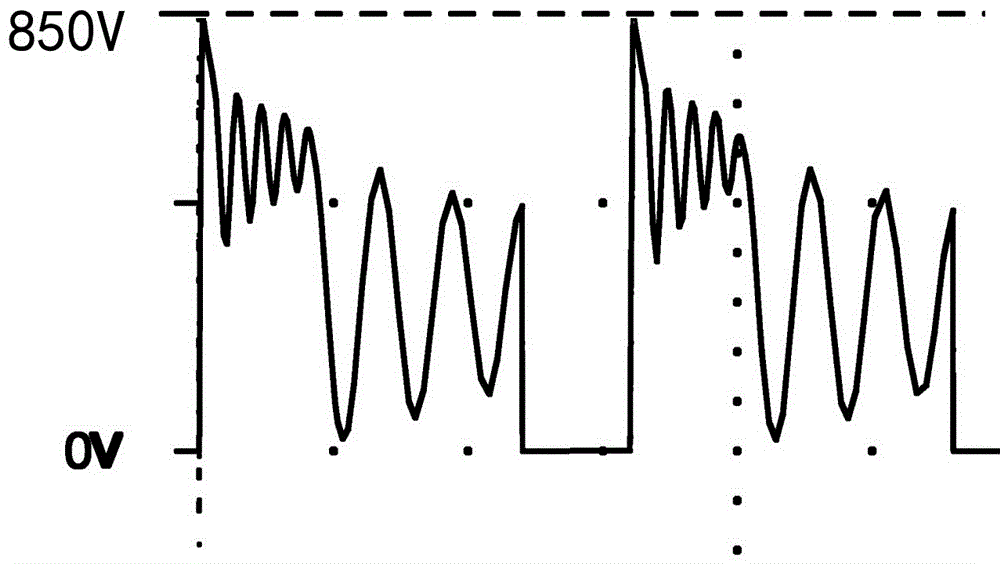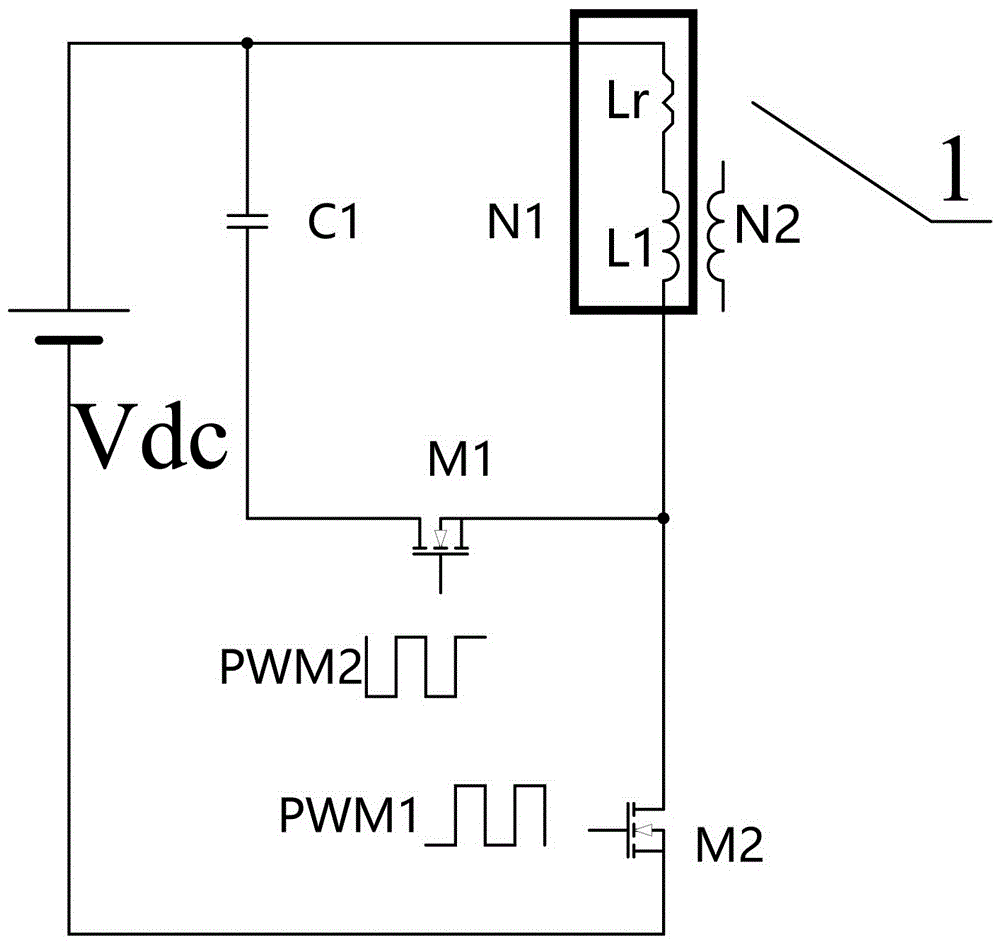Automatic clamping circuit
A clamping circuit and clamping technology, applied in the field of switching power supplies, can solve the problems of reducing converter efficiency, poor EMI, and a large number of auxiliary devices, and achieve the effects of improving reliability and efficiency and reducing costs.
- Summary
- Abstract
- Description
- Claims
- Application Information
AI Technical Summary
Problems solved by technology
Method used
Image
Examples
Embodiment Construction
[0022] The present invention will be further described below in conjunction with drawings and embodiments. It should be understood that the specific embodiments described here are only used to explain the present invention, but not to limit the present invention. In addition, it should be noted that, for the convenience of description, only some parts related to the present invention are shown in the accompanying drawings but not the whole content. Unless otherwise defined, all technical and scientific terms used herein are related to the technology belonging to the present invention. Those skilled in the art usually understand the same meaning. The terminology used herein is for the purpose of describing specific embodiments only, and is not intended to limit the invention.
[0023] Please refer to Figure 4 The structure diagram of the first automatic clamping circuit of the first embodiment provided by the present invention is shown
[0024] This embodiment includes a cl...
PUM
 Login to View More
Login to View More Abstract
Description
Claims
Application Information
 Login to View More
Login to View More - R&D
- Intellectual Property
- Life Sciences
- Materials
- Tech Scout
- Unparalleled Data Quality
- Higher Quality Content
- 60% Fewer Hallucinations
Browse by: Latest US Patents, China's latest patents, Technical Efficacy Thesaurus, Application Domain, Technology Topic, Popular Technical Reports.
© 2025 PatSnap. All rights reserved.Legal|Privacy policy|Modern Slavery Act Transparency Statement|Sitemap|About US| Contact US: help@patsnap.com



